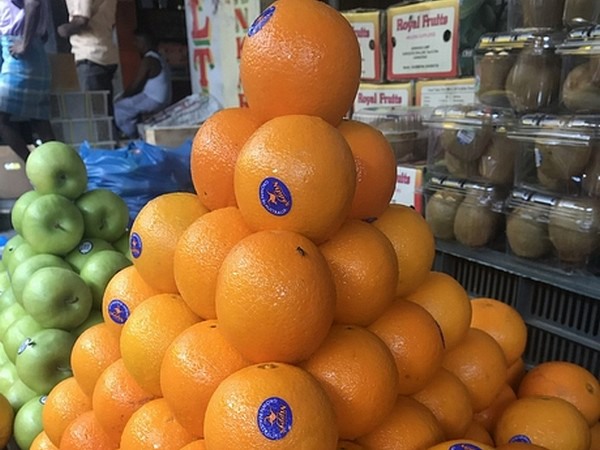Citrus Australia has received Federal Government funding for a major project aimed at tapping into the Indian market with exports of high-quality oranges and mandarins in the coming months.
A $485,771 grant will help Aussie citrus growers map the Indian market and supply chains, build capabilities and boost sales through business exchanges and marketing campaigns.
The peak citrus body says with recent years of positive industry growth, it has meant there has been a number of plantings going into the ground, and significant volumes are expected in coming years, and the organisation has been seeking out new premium markets for Australian citrus and says the sub-continent presents a great opportunity.
"If you look at population alone, 20 per cent of the world’s population are in the India sub-continent region," Citrus Australia Market Development Manager - South Asia, Claire Fitchett said. "But we are not looking to market to the masses. As much as I would like to get an Aussie orange or mandarin into every hand, we know that's not going to happen. We have a premium product marketed at a higher price point, and our job is to find those niche opportunities, using a targeted approach. We have to ask ourselves how much headroom do we have in our markets? I think there are opportunities for incremental increases in a range of markets, but India really represents that step-change opportunity in the next decade. India also has the ability to take a range of grades and sizes, which is a huge benefit for us."

Photo: Claire Fitchett speaking at the recent Citrus Technical Forum
The Australian citrus industry currently exports up to $540 million worth of citrus around the world and India and the sub-continent have been recognized as potential growth markets. India has a population of 1.3 billion people, with 24 per cent classified as middle-income or higher.
Ms Fitchett explained that while India presents a lot of opportunities, it is not without a number of challenges.
"We know it is a price-driven market, and they are buying at a certain price-point, so we have to trade the market up to a first-grade premium product," Ms Fitchett said. "We also have competition from locally grown fruit such as mangoes. There was also a 30 per cent tariff, and we’re very happy to report that’s been reduced to 15% for the first 13,700 tonnes of oranges and mandarins in this round of negotiations on the FTA. Infrastructure has a big challenge in India, especially the cold chain systems that have been lacking. But we know change is happening."
Citrus Australia has three pillars as part of the project, starting with market familiarisation, which includes a visit to the country to see firsthand how the supply chain works, and who are the industry's major players. The second is building relationships where importers will be brought to Australia to witness how the fruit is produced, and the third pillar is activity in the market, involving speaking at conferences and attending large-scale trade shows. The peak body has a presence at Fresh Produce India this year and in 2023.
"We know we have the best tasting citrus in the world, that's why we have had such success in Asia," Ms Fitchett said. "You can have the best looking brand at the cheapest price, but we all know that repeat purchases are based on taste. That's something we can hang our hat on. So, we want to give confidence to the trade sector in India that we have the ability to produce a safe and quality product, and we have got the systems and traceability to back up our claims."
Under the project, Citrus Australia aims to develop a market for class-1 fruit, including navel oranges, and Afourer and Murcott mandarins, seeking to develop premium returns to Australian growers. It will achieve this through conducting detailed research into the Indian market, increased engagement with those along the Indian supply chain, dedicating additional resources to build relationships and capability, and conducting study tours and inward trade missions with Australian citrus businesses.

File: Australian citrus in Chennai (courtesy: Citrus Australia)
Citrus Australia CEO Nathan Hancock said there are considerable challenges to increasing exports to India so dedicated resources are required to gain a better understanding of the market and build and maintain relationships.
“The Australian citrus industry has been successful on the back of free trade agreements. Where we have had our biggest successes is where we have spent time building relationships, spending time understanding our partners' needs and the challenges they see and having them visit the farms and packing sheds in Australia to get an appreciation of our industry and the people behind the produce.”
“We look forward to developing long term relations with business leaders and government in India," he said. "It’s a country with such a rich culture and a vibrancy and we see great opportunities for mutual benefit for traders in both countries and the end consumer. We thank the Commonwealth Government for realizing the potential of this market and our strategic plan by providing this funding. Work conducted by Citrus Australia through this project over the next two years will put the foundations in place to grow exports of class-1 Australian citrus to as much as 30,000 tonnes by 2030.”
Minister for Agriculture and Northern Australia David Littleproud said the Citrus Australia project would help Australian growers to target high-value niche markets in India.
“This Agricultural Trade and Market Access Cooperation (ATMAC) grant to Citrus Australia is a great help for our citrus growers to diversify their market and grow their businesses,” Minister Littleproud said. “The past two years have been marred by market disruptions and global freight and logistics challenges, and India and the subcontinent present real growth prospects for our high-quality, sustainable Aussie citrus."
For more information
Citrus Australia
Phone: +61 3 5023 6333
[email protected]
www.citrusaustralia.com.au
